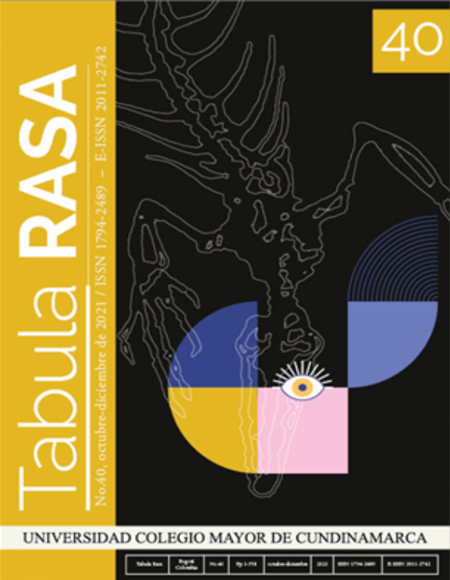Desiring a connection with others. Learning from and with dogs through artistic research
El deseo de una conexión con otros. Aprendiendo de y con los perros mediante la investigación artística
Show authors biography
The animal, and the questions that pertain to it in respect of its often-complex relationship with humanity, are of significance when considering agency, equality and effective codependencies. How human animals respond too, and treat non-humans, particularly those invited into our homes to be companions, has pertinency within the assembly of interspecies constructs. That non-human animals are always the observed (Berger, 1980) must be reexamined, re-addressed and re-balanced for it influences how humans consider other species as bodies of lesser value. This article explores the intricacies, complexities and productive abundancies in my artistic research project, Be Your Dog, which aims to do just. It discusses gender perspectives and specificities, the formation of the dog pack and its individual components, and the sway of the gallery on artistic relevance in this project that explores how to establish equality through interspecies synchronicity and empathy within a creative act.
Article visits 130 | PDF visits 74
Downloads
Baker, S. (2000). The Postmodern Animal. London: Reaktion.
Benjamin, W. (2014). True dog stories. En L. Rosenthal (Ed.). Radio Benjamin (pp.182-188). London: Verso.
Benjamin, W. (1997). One-Way Street and Other Writings. London: Verso Books.
Berger, J. (1980). About Looking. New York: Vintage.
Bersani, L. (1987). Is the Rectum a Grave? October, 43, 197-222.
Butler, J. (2006). Gender Trouble: Feminism and the Subversion of Identity. Abingdon:Routledge.
Deleuze, G. & Guattari, F. (1987). A Thousand Plateaus: Capitalism and Schizophrenia. Minneapolis: University of Minnesota Press.
Deleuze, G. & Guattari, F. (1986). Kafka: Towards a Minor Literature. Minneapolis: University of Minnesota Press.
Derrida, J. (2002) The Animal That Therefore I Am (More to Follow). Critical Inquiry, 28(2), 369-418.
Derrida, J. (2000). On Touching – Jean-Luc Nancy. Stanford: Stanford University Press.
Duranton, C. & Gaunet, F. (2015). Canis Sensitivus: Affiliation and Dogs Sensitivity to Others’ Behavior as the Basis for Synchonization With Humans? Journal of Veterinary Behavior, 10, 513-524.
Haraway, D. (2003). The Companion Species Manifesto: Dogs, People, and Significant Otherness. Chicago: Prickly Paradigm Press.
Lingis, A. (2003) Animal Body, Inhuman Face. In C. Wolfe (Ed.). Zoontologies: The Question of the Animal (pp.165-182). Minneapolis: University of Minnesota Press.
McHugh, S. (2004). Dog. London: Reaktion.
Noske, B. (1997). Beyond Boundaries: Humans and Animals. London: Black Rose Books.
Palagi, E, Nicotra, V. & Cordoni, G. (2015) Rapid Mimicry and Emotional Contagion in Domestic Dogs. Royal Society Open Science, 2(12). http://rsos.royalsocietypublishing.org/
Royal Society for the Prevention of Cruelty to Animals (2003) RSPCA Policies on Animal Welfare, Booklet.




